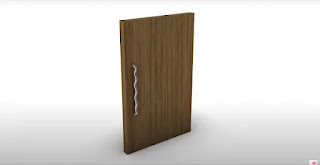Rhino 3D is a powerful 3D modeling software that is popular among
architects, industrial designers, engineers, and artists. One of the
most important commands in Rhino 3D is the Rebuild command, which
allows users to change the control point structure of a curve or
surface without altering its shape. In this article, we will take a
closer look at the Rebuild command, how it works, and some best
practices for using it effectively.
What is the Rebuild command in Rhino 3D?
The Rebuild command in Rhino 3D is a tool used to change the control
point structure of a curve or surface while maintaining its shape. The
control points are the points that define the shape of the curve or
surface, and changing their structure can have a significant impact on
the geometry of the object. The Rebuild command allows users to adjust
the number of control points and their distribution along the curve or
surface to achieve a smoother, more efficient shape.
The Rebuild command is particularly useful when working with complex
or irregular geometry. By reducing the number of control points or
changing their distribution, users can simplify the geometry and make
it easier to work with. This can help reduce file size, increase
rendering speed, and make the model more stable.
How does the Rebuild command work?
The Rebuild command in Rhino 3D works by creating a new curve or
surface based on the original one, but with a different control point
structure. When using the command, users have the option to specify
the number of control points and their distribution along the curve or
surface.
To use the Rebuild command in Rhino 3D, follow these steps:
Select the curve or surface you want to rebuild.
Type "Rebuild" in the command line or select "Rebuild" from the
"Edit" menu.
In the Rebuild Options dialog box, specify the number of control
points you want to use and the degree of the curve or surface.
Adjust the point spacing and tolerance settings as desired.
Click "OK" to create the new curve or surface.
It is important to note that the Rebuild command can only be used on
curves or surfaces that are not closed. If you need to rebuild a
closed curve or surface, you will need to first split it into two or
more open curves or surfaces.
Best practices for using the Rebuild command in Rhino 3D
While the Rebuild command can be a powerful tool for simplifying and
optimizing geometry in Rhino 3D, there are some best practices to keep
in mind to ensure you achieve the desired results.
Use the Rebuild command sparingly. While the command can be useful
for reducing the complexity of a model, overusing it can result in a
loss of detail and accuracy. Only use the command when necessary and
be sure to check the results carefully.
Consider the impact on the model. When using the Rebuild command, be
aware that changing the control point structure can have a significant
impact on the model's appearance and performance. Before using the
command, consider how it will affect the overall design and
functionality of the model.
Choose the right number of control points. When using the Rebuild
command, it is important to choose the right number of control points
to achieve the desired results. Too few control points can result in a
loss of detail and accuracy, while too many can make the model more
complex and difficult to work with.
Pay attention to point spacing and tolerance. The point spacing and
tolerance settings in the Rebuild options dialog box can have a
significant impact on the model's appearance and performance. Be sure
to adjust these settings carefully to achieve the desired results.
Check the results carefully. After using the Rebuild command, be sure
to check the results carefully to ensure that the curve or surface has
maintained its original shape and that the new control point structure
is acceptable. It may be necessary to make adjustments to the number
of control points, point spacing, or tolerance to achieve the desired
results.
Use the Rebuild command in combination with other tools. The Rebuild
command can be used in combination with other Rhino 3D tools, such as
the Trim or Split command, to achieve more complex geometries.
Experiment with different combinations of tools to find the most
effective approach for your project.
Save a copy of the original curve or surface. Before using the
Rebuild command, it is a good idea to save a copy of the original
curve or surface in case you need to revert back to it later. This can
be done by copying and pasting the object or using the Save As command
to create a new file.
Conclusion
The Rebuild command in Rhino 3D is a powerful tool that allows users
to adjust the control point structure of a curve or surface while
maintaining its shape. By reducing the number of control points or
changing their distribution, users can simplify the geometry, reduce
file size, increase rendering speed, and make the model more
stable.
When using the Rebuild command, it is important to choose the right
number of control points, adjust the point spacing and tolerance
settings carefully, and check the results to ensure that the curve or
surface has maintained its original shape. The command can be used in
combination with other Rhino 3D tools to achieve more complex
geometries, and a copy of the original curve or surface should always
be saved in case you need to revert back to it later.
By following these best practices and experimenting with different
approaches, users can take full advantage of the Rebuild command in
Rhino 3D and create more efficient and effective 3D models.

